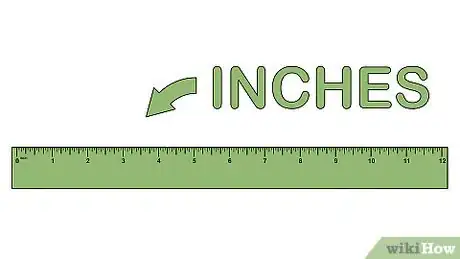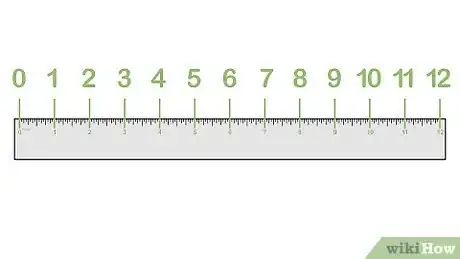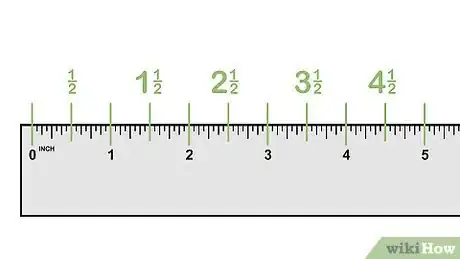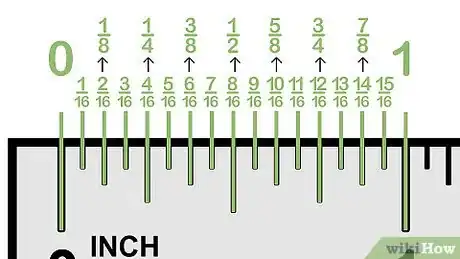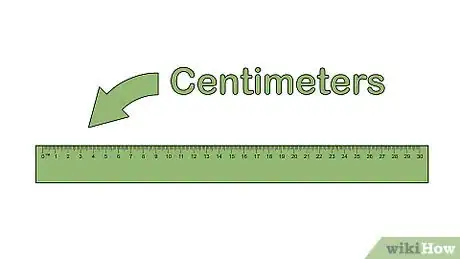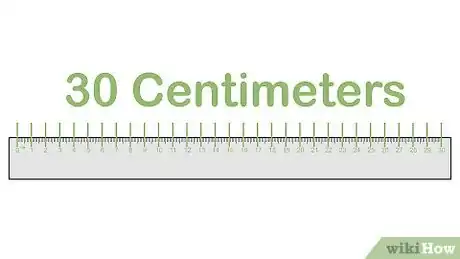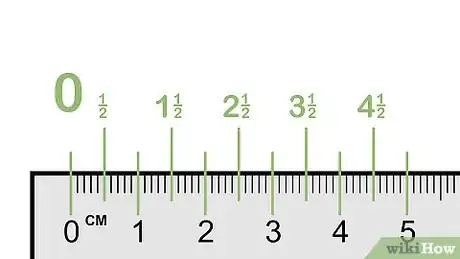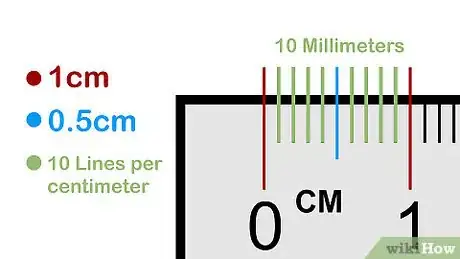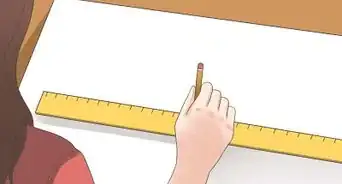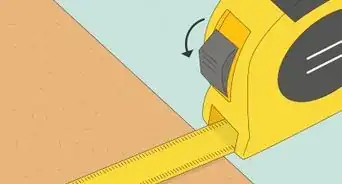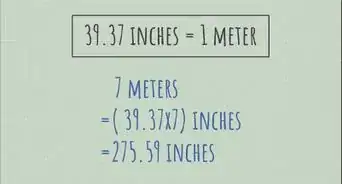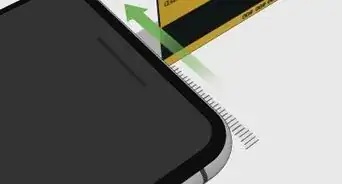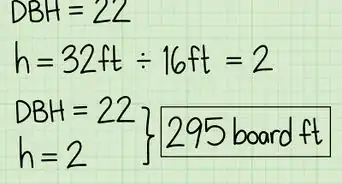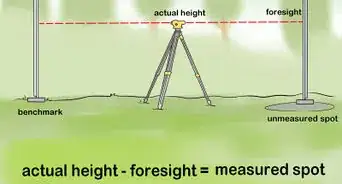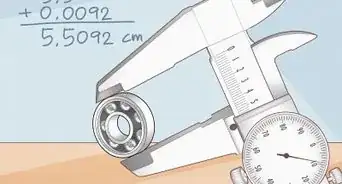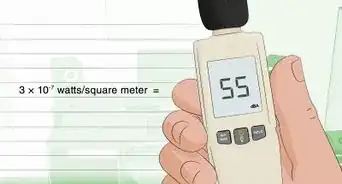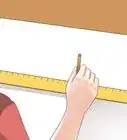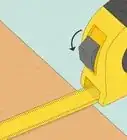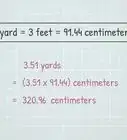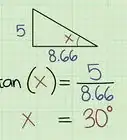This article was co-authored by Jessie Antonellis-John. Jessie Antonellis-John is a Math and Science Instructor who teaches at Southwestern Oregon Community College. With over 10 years of experience, she specializes in curriculum development. Jessie earned her PhD in Teaching & Teacher Education from the University of Arizona, her Master of Education from Western Governors University, and her BS in Astrophysics from Mount Holyoke College. She’s also co-authored several peer-reviewed journal articles in professional publications.
wikiHow marks an article as reader-approved once it receives enough positive feedback. This article received 72 testimonials and 87% of readers who voted found it helpful, earning it our reader-approved status.
This article has been viewed 3,000,968 times.
Need to measure something but getting hung up on all those lines on a ruler? You're in the right place. We're here to explain what the ruler markings mean so taking measurements will be a breeze. Whether you need to know how to read an inch ruler or how to read a metric ruler (cm ruler), this easy guide to ruler measurements has got you covered.
Steps
Reading an Inch Ruler
-
1Get an inch ruler. You'll know it's an inch ruler because it will have 12 lines that denote inches on the ruler. 12 inches equals 1 foot (0.305 m). Each foot is broken down into inches. Each inch is broken down into 15 smaller marks, equaling 16 marks in total for each inch on the ruler.[1]
- The longer the line on the surface of the ruler, the bigger the measurement is. Ranging from 1 inch to 1/16 of an inch, the lines decrease in size as the unit of measurement does.
- Make sure you read the ruler from left to right. If you are measuring something, align it with the left side of the zero mark on the ruler. The left side of the line where the object ends will be its measurement in inches.
-
2Learn the inch marks. A ruler is made up of 12 inch marks. These are typically the numbered marks on the ruler and are denoted by the longest lines on the ruler. For example, if you need to measure a nail, place one end directly on the left side of the ruler. If it ends directly above the long line next to the large number 5, then the nail is 5 inches long.
- Some rulers will also denote 1/2 inches with numbers, so make sure you are using the largest numbers with the longest lines as your inch markers.
Advertisement -
3Learn the 1/2 inch marks. The 1/2 inch marks will be the second longest lines on the ruler, half as long as the inch marks. Each 1/2 inch mark will come midway between each inch number because it is half of an inch. This means that marks directly between the 0 and 1 inch, 1 and 2 inches, 2 and 3 inches, and so on across the ruler, are the 1/2 inch marks. In total, there are 24 of these marks on a 12 inch ruler.[2]
- For example, place the ruler against a pencil with the eraser at the far left of the ruler. Mark where the tip of the pencil lead ends on the ruler. If the pencil point ends at the shorter line halfway between the 4 and 5 inches marks, then your pencil is 4 and 1/2 inches long.
-
4Learn the 1/4 of an inch marks. Halfway in between each 1/2 inch line, there will be a smaller line that denotes a 1/4 of an inch. In the first inch, these marks will mark 1/4, 1/2, 3/4, and 1 inch. Although the 1/2 inch and 1 inch marks have their own lines, they are still part of the 1/4 of an inch measurements because 2/4 of an inch equals half an inch and 4/4 of an inch equals 1 inch. There are a total of 48 of these marks on a 12 inch ruler.[3]
- For example, if you measure a carrot and the tip falls on the line halfway between the 6 1/2 and 7 inch lines, the carrot is 6 and 3/4 inches long.
-
5Learn the 1/8 of an inch marks. The 1/8 of an inch marks are the smaller marks found directly in between the 1/4 of an inch marks on the ruler. Between 0 and 1 inch, there are marks that denote 1/8, 1/4 (or 2/8), 3/8, 1/2 (or 4/8), 5/8, 6/8 (or 3/4), 7/8, and 1 (or 8/8) of an inch. In total, there are 96 of these marks on a 12 inch ruler.[4]
- For example, you measure a piece of fabric and the edge falls on the 6th line after the 4 inch mark, which is directly in between the 1/4 of an inch mark and the 1/2 inch mark. This means that your fabric is 4 and 3/8 inches long.
-
6Learn the 1/16 of an inch marks. The small lines halfway between each 1/8 of an inch denote 1/16 of an inch. These are also the smallest lines on the ruler. The very first line on the left hand side of the ruler is the 1/16 of an inch mark. Between 0 and 1 inch, there are marks that denote 1/16, 2/16 (or 1/8), 3/16, 4/16 (or 1/4), 5/16, 6/16 (or 3/8), 7/16, 8/16 (or 1/2), 9/16, 10/16 (or 5/8), 11/16, 12/16 (3/4), 13/16, 14/16 (or 7/8), 15/16, 16/16 (or 1) of an inch. There are a total of 192 of these lines on the ruler.[5]
- For example, you measure a flower stem and the end of the stem falls on the 11th line after the 5 inch mark. The flower stem is 5 and 11/16 inches long.
- Not every ruler will have the 1/16 inch mark. If you plan on measuring things that are small or you need to be extremely accurate, make sure the ruler you use has these marks.
Reading a Metric Ruler
-
1Get a metric ruler. A metric ruler is based on the International System of Units (SI), sometimes called the metric system, and is divided into either millimeters or centimeters instead of inches. Rulers are often 30 centimeters long, which are designated by large numbers on the ruler. Between each centimeter (cm) mark, there should be 10 smaller marks called millimeters (mm).
- Make sure you read the ruler from left to right. If you are measuring an object, align it with the left side of the zero mark on the ruler. The left side of the line where the object ends will be its measurement in centimeters. This way the line thickness will not affect the measurement.
- Unlike with the English ruler, the measurements for the metric ruler are written in decimals instead of fractions. For example, 1/2 a centimeter is written as 0.5 cm. [6]
-
2Learn the centimeter marks. The large numbers next to the longest lines on the ruler denote the centimeter marks. A metric ruler has 30 of these marks. For example, place the bottom of a crayon on the far left side of the ruler to measure it. Note where the tip falls. If the crayon ends directly on the long line next to the large number 14, your crayon is exactly 14 cm long.[7]
-
3Learn the 1/2 of a centimeter marks. Halfway between each centimeter, there is a slightly shorter line that denotes 1/2 of a centimeter, or 0.5 cm. There are a total of 60 of these marks on a 30 cm ruler.[8]
- For example, you measure a button and the edge ends on the fifth line right between the 1 and 2 centimeter marks. Your button is 1.5 cm long.
- For example, to measure 0.6 cm, count one thick line (5 mm) and one thin line (1 mm).
-
4Learn the millimeter marks. Between each 0.5 cm line, there are four additional lines that denote the millimeter marks. There are a total of 10 lines per centimeter, with the 0.5 cm line acting as the 5 millimeter mark, making each centimeter 10 mm long. There are 300 millimeter marks on a 30 cm ruler.[9]
- For example, if you measure a piece of paper and it ends on the 7th mark between the 24 and 25 centimeter mark, it means your object is 247 mm, or 24.7 cm long.
Community Q&A
-
QuestionWhat is 55.5? Is that larger than 55 1/4?
 Community AnswerThe 55.5 is larger than 55 1/4. the .5 on the 55.5 would equal 1/2. Therefore, 55.5 is equal to 55 1/2 which is 1/4" larger than 55 1/4.
Community AnswerThe 55.5 is larger than 55 1/4. the .5 on the 55.5 would equal 1/2. Therefore, 55.5 is equal to 55 1/2 which is 1/4" larger than 55 1/4. -
QuestionCan I learn to read a ruler in one day?
 Community AnswerYes, but it really depends on what type of ruler you want to learn as well as how fast you pick up new material
Community AnswerYes, but it really depends on what type of ruler you want to learn as well as how fast you pick up new material -
QuestionWhat does it mean when mm is shown just beside the 0 in a ruler?
 Community AnswerEach small line represents 1mm. Therefore, the first line past the big number (for instance 25) will represent 25.1cm or 251mm.
Community AnswerEach small line represents 1mm. Therefore, the first line past the big number (for instance 25) will represent 25.1cm or 251mm.
Expert Interview
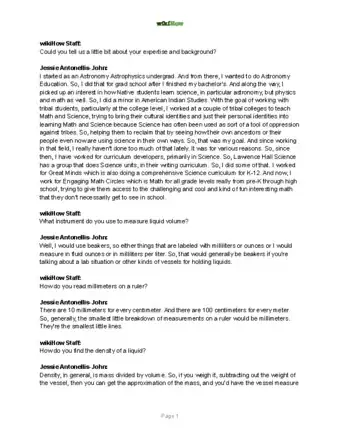
Thanks for reading our article! If you'd like to learn more about measuring liquid volume, check out our in-depth interview with Jessie Antonellis-John.
References
- ↑ http://www.craft-a-project.com/Ruler-Measurements.html
- ↑ http://www.craft-a-project.com/Ruler-Measurements.html
- ↑ http://www.craft-a-project.com/Ruler-Measurements.html
- ↑ http://www.craft-a-project.com/Ruler-Measurements.html
- ↑ http://www.craft-a-project.com/Ruler-Measurements.html
- ↑ http://www.geionline.com/metric-ruler
- ↑ http://www.geionline.com/metric-ruler
- ↑ http://www.geionline.com/metric-ruler
- ↑ http://www.askmrcscience.net/sitebuildercontent/sitebuilderfiles/readingametricruler.pdf
About This Article
To read a metric ruler to measure centimeters, look at the long lines on the ruler that are numbered 1-30, which are the centimeter marks. The distance between them is equal to 1 centimeter. There are smaller lines between the larger centimeter lines, which represent millimeters. Alternatively, to read an English ruler, start by looking for the inch lines, which are the longest lines on the ruler that are numbered 1-12. The distance between those lines is 1 inch, and then the smaller lines between them are 1/2, 1/4, 1/6 and 1/8 inches! For tips on how to count the smaller lines and figure out how many millimeters you're working with, read on!
